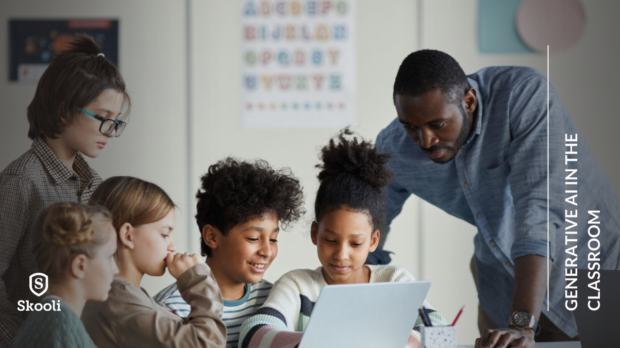Generative AI in the Classroom
As technology continues to revolutionize the way we live and work, it can also revolutionize our classrooms. One such tech tool has been met with much uneasiness but also has the potential to make a significant impact in the education sector.
Generative AI uses algorithms to create content. Reuters explains how generative AI differs from the artificial intelligence with which we have become familiar: “Like other forms of artificial intelligence, generative AI learns how to take actions from past data.
It creates brand new content – a text, an image, even computer code – based on that training, instead of simply categorizing or identifying data like other AI.” Probably the best-known example is ChatGPT.
EdTech continues to evolve
Just like all technology, EdTech continues to evolve. More and more, the technology we are using in education is the same as that being used in the business world. A case in point is ChatGPT.
Already being widely used by businesses, ChatGPT is a powerful tool that can be used to support and enhance teaching and learning in the classroom.
Here are some ways that ChatGPT can be used in the classroom:
- To support and enhance teaching: ChatGPT can be used to create and deliver engaging lessons, quizzes and activities. It can also be used to provide feedback on student work, track student progress and manage classwork assignments.
- To support and enhance learning: ChatGPT can be used to facilitate group work, promote collaboration among students and provide access to rich educational resources. It can also be used to personalize learning experiences and meet the needs of every learner.
- To support school administration: ChatGPT can be used to communicate with parents, staff and administrators. It can also be used to manage school records, schedule events and coordinate transportation.
The role of AI in the classroom
AI is playing an increasingly important role in the classroom. ChatGPT is one of the most popular AI applications currently available, and it is having a profound impact on the way students learn.
ChatGPT allows students to have real-time conversations with bots that are designed to simulate human conversation. This gives students a unique opportunity to practice their communication skills in a safe and controlled environment. In addition, ChatGPT can be used to provide feedback on student performance and help identify areas where improvement is needed.
Overall, the use of ChatGPT in the classroom can help create a more interactive and engaging learning experience for students. It also has the potential to improve student outcomes by providing them with a valuable tool for practicing communication skills.
The challenges of ChatGPT
Cheating is certainly the most obvious concern for schools and has prompted some, like New York City Public Schools, to institute bans and TurnItIn to introduce an AI detection feature.
Since students will have access to this technology outside of the classroom, a more beneficial direction would be to incorporate the technology and teach students how to use it wisely. As Shana Ramin, a school technology integration specialist and former teacher, said in a recent K-12 Dive article, “You have to talk about what is an ethical use of AI and what is an unethical use of AI, and not assume that students know what that means.”
Technology plays a critical role in education. Consider how technology made it possible for schools to continue to educate students through the pandemic. Or how technology allows Skooli’s professional tutors to provide a safe and secure learning environment for students who need live, on-demand homework help, feedback on an assignment (in 24 hours or less), or scheduled high dosage tutoring.
How will your district incorporate generative AI as part of your EdTech portfolio?

